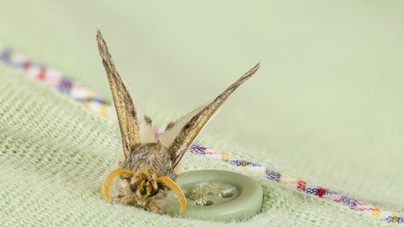Birds find residential areas to be very attractive because of the presence of easy food source and plenty of shelter opportunities. Apartment balconies and building structures provide them the perfect place for living and thriving. High-rise buildings’ ledges mean that they are safe from the city-traffic and their eggs from other predators.
However, this leads to a lot of problems for the residents in the nearby area. Birds are very infamous for spreading filth with their droppings everywhere. They have been declared as a pest in a lot of areas because of the nuisance they create. Their feathers and droppings contain germs, bacteria and other parasites that spread diseases like food poisoning, diarrhoea, fever and even asthma and lung infections in extreme cases.

Birds like pigeons find the window ledges, rooftops, bridges, and warehouses to be perfect places for their roosting, nesting and sheltering. Also dangerous is the fact that pigeon poop-ridden places are very prone to fungus growth, leading to many health hazards. Birds construct their nests in tight spaces and in the nooks and crannies of air conditioners, box-window sills, etc. These birds also carry pests such as ticks, mites, fleas and lice that can make people and their pets sick.
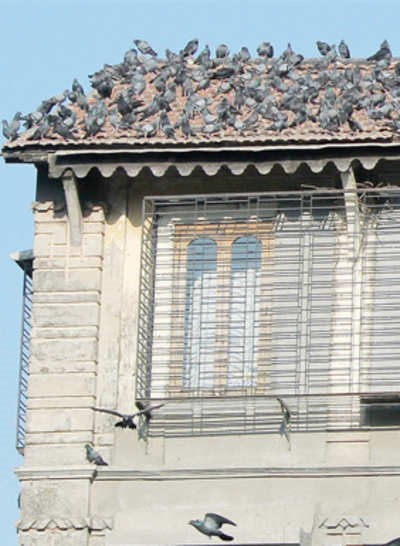
The damage they cause to buildings and structures with their roosting and droppings are many. Besides ruining the aesthetics, pigeon droppings, due to their acidic nature and fungi growth enabling, also have a corrosive effect on buildings, monuments and other structures. These acidic droppings have degrading effects on most surfaces like wood, stone, painted walls as well as copper and steel.
Once they find a convenient spot which fulfils their food and water need, they settle there. Bird nests at the wrong place can clog gutters, chimneys and pipes, cause electricity hazards leading to fire and also block adequate air supply. Gardens and lawns are also destroyed by birds. They peck at fresh fruits and can contaminate plants with their droppings.
When birds like pigeons find a suitable spot, they start multiplying aggressively leading to their dominance in an area. This causes other smaller birds like mynahs and sparrows to flee from the area causing a disturbance in the natural biodiversity there.
Some incidences of bird menace are quoted below:
Pigeon hell
“Mumbai runs for cover as an exploding population of pigeons, fed and fattened by easy availability of food, lays siege to the city
Mulund homemaker Preeti Wadhwa, 27, recently spent Rs 15,000 to cover her apartment windows with specialised netting to block pigeons that had become a nuisance and a health hazard, dropping huge quantity of “infectionspreading” excrement on window sills.
“But the problem has not been solved. They now sit on the ledges above the windows”, she said. The Wadhwa family presents a side of a growing debate in Mumbai over the impact of pigeons, whose numbers have multiplied exponentially in the past two decades.”
Coast hotels forced to hire bird chasers in fight against house crows
“The workers chase the black and grey necked birds that hover around the hotel lawn looking for food. “They are a real nuisance. They grab food from plates. They excrete all over as they fly from one spot to another,” he said.
In the 2018/19 financial year, Mombasa County government allocated Sh30 million to eradicate the birds. Yesterday, senior county officials declined to comment on the matter despite concerns by players in the hospitality industry and scientists who have described the birds as invasive pests.
Mohamed Hersi, the Kenya Tourism Federation chair described the Indian house crows as a huge messy affair. “We can no longer ignore this sad state of affairs. They eat all the nice small indigenous birds and they equally soil every surface they perch on,” he said. Hersi said the county’s Environment department should come up with a plan to address the menace once and for all.
Fires caused by bird nests common in eastern Iowa
A bird’s nest that was sitting on top of an outdoor lighting fixture caused an early morning house fire Thursday in Cedar Rapids.
The fire broke out around 2:00 a.m. at a home in the 700 block of Bever Ridge Court southeast.
Marion’s Fire Marshal Wade Markley says bird nest fires are more common than most may realize.
“We find bird nests and lint build up on properties all the time,” said Markley.
Markey says he sees bird’s nests causing fires a few times every year.”
Killing however, isn’t the solution to this problem. Killing is not only extremely cruel, it does not solve the root cause of the problem, leading to an endless cycle of killing the birds. Some other methods that have been tried to solve this bird menace include the use of ultrasonic devices to shoo away the birds and installing trapping devices on windows and ledges. However, these methods are not very efficient as it has been proved that birds’ reaing range is around the same as us humans’, making sonic devices useless and trapping is more of a short-term solution and requires constant manual monitoring.
This makes it a pressing problem to find solutions to this menace. A solution that is sustainable and also does not require tremendous efforts from our end.
CombirepelTM is a product manufactured by C Tech Corporation which is anti-rodent, anti-insect, and anti-bird polymer additives specially designed for a range of polymeric applications.
CombirepelTM Bird repellent gel lacquer is the product produced by C Tech Corporation to prevent the menace caused by birds. This product is specially designed to prevent bird perching and roosting.
It is available in the form of concentrate lacquer. The lacquer works on the principle of tactile repellence. The product causes the bird’s pain receptors associated with taste. Some birds use their sense of smell through which they recognize that the product is a threat. The product is specially designed to prevent perching and roosting of birds. Repellent evokes a physiological effect which the birds associated with sensory cue and then learn to avoid it. This prevents their infestation thereby avoiding damages.
Our new CombirepelTM Bird repellent spray has all the above-mentioned properties and is very user friendly making it easy to use and convenient for application.
The gel lacquer is transparent and is compatible with most of the surfaces which makes it easy to apply. It can be directly applied to areas prone to bird roosting.
Thus using the bird’s sensory mechanism we can get rid of them without causing them any physical harm. It does not kill or harm the insect but repels them.
It is RoHS, RoHS2, EU – BPR, ISO, REACH, APVMA, NEA compliant and FIFRA exempted.
Contact us at technical.marketing@ctechcorporation.com to keep the pests away.
Also, visit our websites:
1] http://www.ctechcorporation.com/
Follow our Facebook pages at:
1] https://www.facebook.com/Combirepel-411710912249274/
2] https://www.facebook.com/Termirepel-104225413091251/
3] https://www.facebook.com/Rodrepel-120734974768048/
Follow us on our Twitter pages at:
1] https://twitter.com/rodrepel



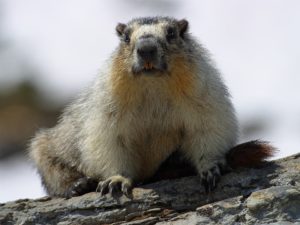 Marmots are large rodents that often become a nuisance to gardeners, farmers, and homeowners due to their appetites and burrowing habits. The yellow-bellied marmot is the most common species in the United States and a close relative of the woodchuck. Also known as rockchucks or whistle pigs, yellow-bellied marmots are social creatures that live in communities of 10 to 20 individuals. During the spring and summer, the animals undergo a period of hyperphagia, a feeding frenzy designed to fatten the marmots so they can survive the coming winter. By huddling together in underground burrows lined with hay or grass, marmots hibernate for up to 200 days at a time, easily spending half of their 13 to 15 years of life asleep.
Marmots are large rodents that often become a nuisance to gardeners, farmers, and homeowners due to their appetites and burrowing habits. The yellow-bellied marmot is the most common species in the United States and a close relative of the woodchuck. Also known as rockchucks or whistle pigs, yellow-bellied marmots are social creatures that live in communities of 10 to 20 individuals. During the spring and summer, the animals undergo a period of hyperphagia, a feeding frenzy designed to fatten the marmots so they can survive the coming winter. By huddling together in underground burrows lined with hay or grass, marmots hibernate for up to 200 days at a time, easily spending half of their 13 to 15 years of life asleep.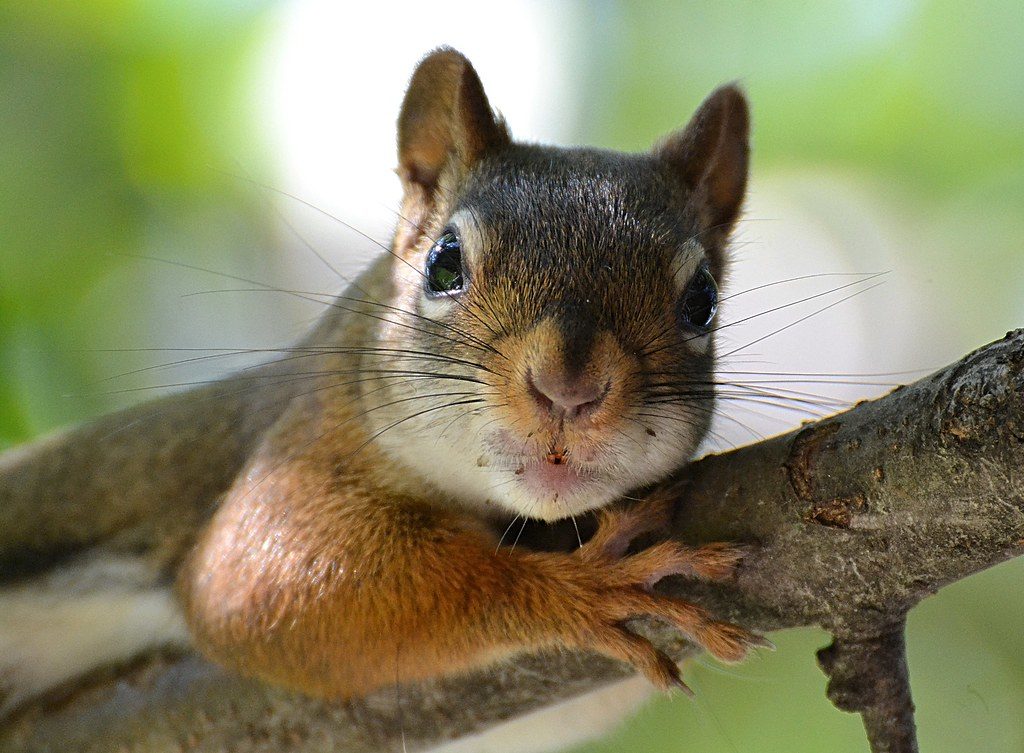


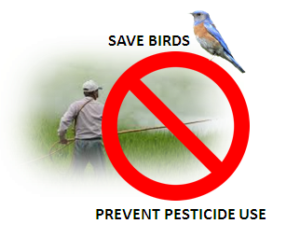 It’s no secret. For years, we’ve known that different species of birds in farmlands and grasslands have been in steep decline. The assumption was that this was due to habitat removal caused by agricultural expansion, deforestation to create concrete jungles that were once devoted to farming. What’s doing away with all those birds? Pesticides!
It’s no secret. For years, we’ve known that different species of birds in farmlands and grasslands have been in steep decline. The assumption was that this was due to habitat removal caused by agricultural expansion, deforestation to create concrete jungles that were once devoted to farming. What’s doing away with all those birds? Pesticides!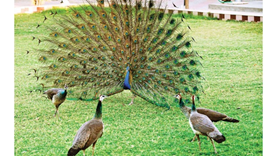 A preliminary report by the Forensic Science Laboratory (FSL) on the death of more than 30 peacocks and peahens pins the cause of death in most cases as excessive use of pesticides. The large scale death of peacocks in Adesar sanctuary area in Kutch in September caused an uproar amongst wildlife enthusiasts, who suspected villagers had poisoned grains fed to 15 peahens and as many peacocks.
A preliminary report by the Forensic Science Laboratory (FSL) on the death of more than 30 peacocks and peahens pins the cause of death in most cases as excessive use of pesticides. The large scale death of peacocks in Adesar sanctuary area in Kutch in September caused an uproar amongst wildlife enthusiasts, who suspected villagers had poisoned grains fed to 15 peahens and as many peacocks.


 The black and white magpie is widely considered one of the most intelligent animals in the world and one of the only nonmammal species able to recognize itself in a mirror test. Magpies have lived in close association with humans for centuries. They have unusually long tails (at least half of their body length) and short, rounded wings. The feathers of the tail and wings are iridescent, reflecting a bronzy-green to purple. They have white bellies and shoulder patches and their wings flash white in flight. Like other corvids, they are very vocal, even boisterous. Typical calls include a whining “Maag” and a series of loud, harsh “chuck” notes.
The black and white magpie is widely considered one of the most intelligent animals in the world and one of the only nonmammal species able to recognize itself in a mirror test. Magpies have lived in close association with humans for centuries. They have unusually long tails (at least half of their body length) and short, rounded wings. The feathers of the tail and wings are iridescent, reflecting a bronzy-green to purple. They have white bellies and shoulder patches and their wings flash white in flight. Like other corvids, they are very vocal, even boisterous. Typical calls include a whining “Maag” and a series of loud, harsh “chuck” notes. Hospital issues warning as ‘extraordinary’ spate of bird-inflicted injuries include a penetrated eye that required surgery
Hospital issues warning as ‘extraordinary’ spate of bird-inflicted injuries include a penetrated eye that required surgery
